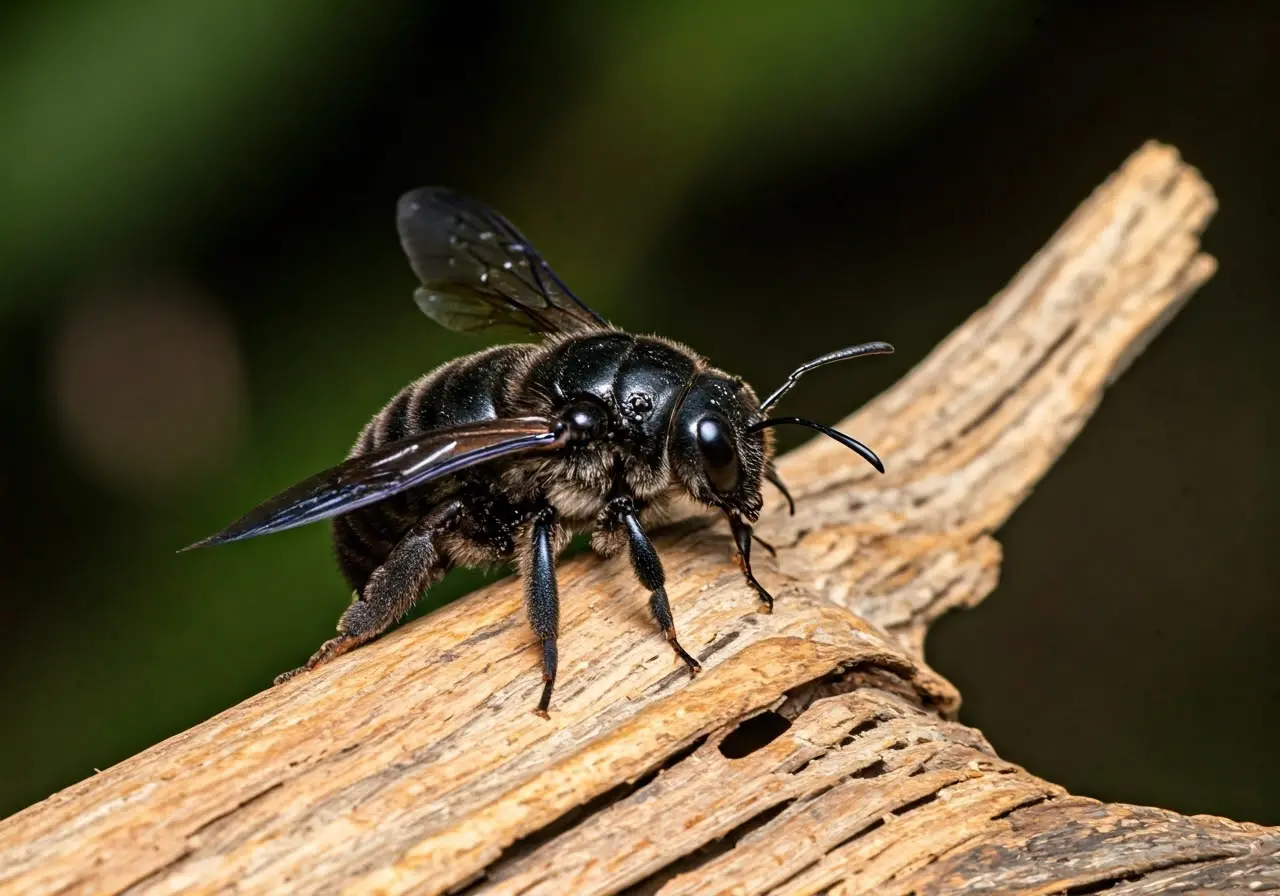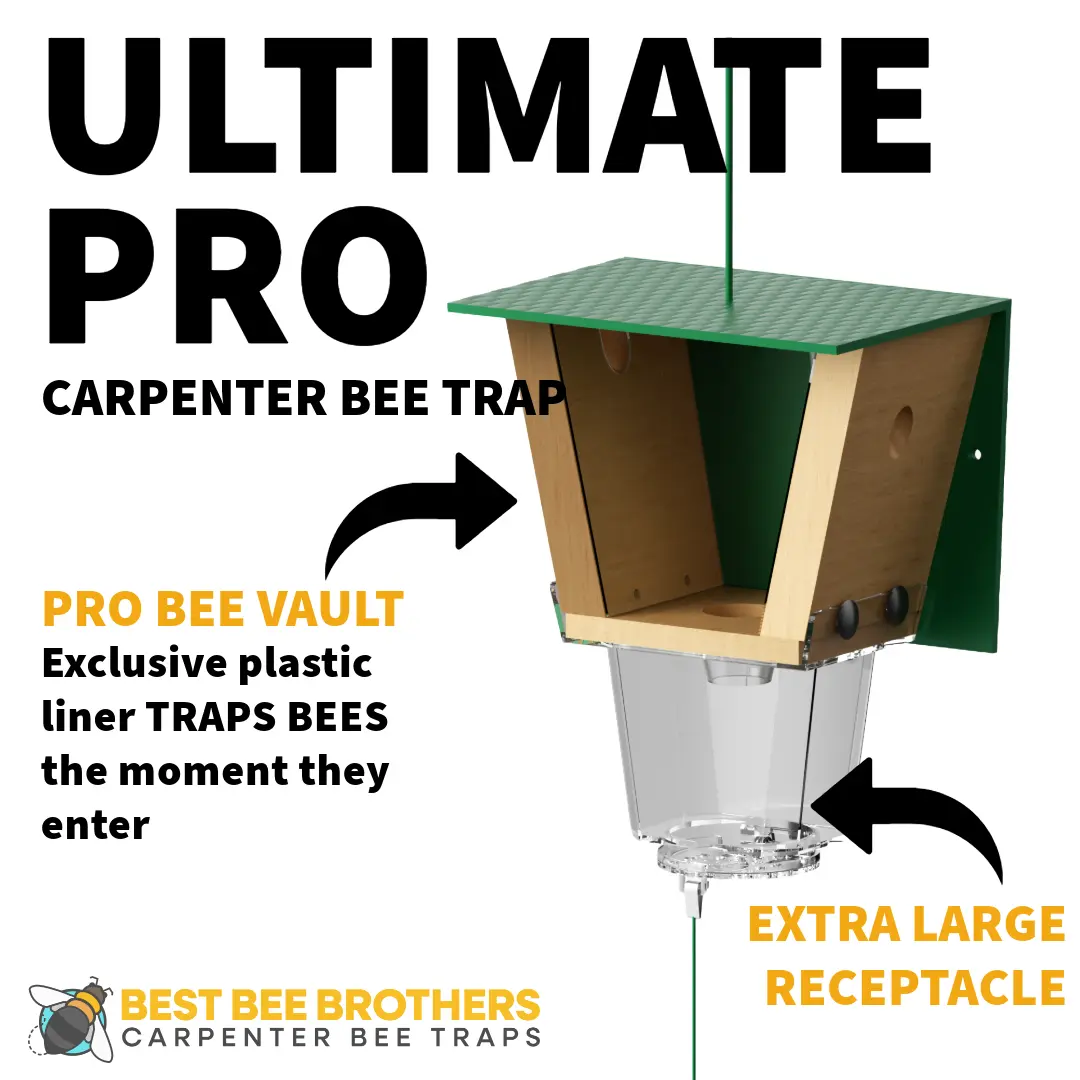Carpenter bees are fascinating creatures, but they can cause quite a bit of disruption to your home if not identified and managed early. In this blog, we will explore how to recognize their presence so you can take the necessary steps to protect your property.
Understanding Carpenter Bees
Before diving into identifying carpenter bee activity, it’s essential to understand these bees’ characteristics. Carpenter bees are large, solitary insects that resemble bumblebees but lack the distinct fuzz on their abdomen. Unlike bumblebees, which live in colonies, carpenter bees prefer a life of solitude. They are most often found around wooden structures, which they bore into to create nests for their offspring. Interestingly, it’s the female carpenter bees that do most of the burrowing work, using their powerful mandibles to drill into the wood. The males, on the other hand, are seen hovering around the nest to ward off threats, even though they cannot sting.
Carpenter bees are known for their distinctive nesting habits. They don’t consume wood but use it to make their nests, which can extend several inches deep. In the wild, carpenter bees often nest in trees, but they find wooden structures of your home equally inviting. This behavior underscores the importance of understanding their nesting habits, as continuously ignoring their presence can lead to considerable structural damage over time. Carpenter bee treatment options are crucial to prevent such damage.
Visual Signs of Carpenter Bees
One of the most apparent signs of carpenter bees is their round, smooth entry holes, typically found in wooden structures. These holes are about a half-inch in diameter and can lead to extensive tunneling within the wood. If you spot such holes in your siding or eaves, it’s a clear indicator of these bees at work. Over time, these entry points can increase in number, as each female bee prefers creating new burrows rather than using existing ones. This expansion puts stress on the wood and can lead to structural concerns if not addressed in due time.
A closer inspection of these holes may reveal additional visual clues. Sometimes, you might notice slight discoloration or staining around the edges, resulting from the bees’ activity and weather exposure. Inside these tunnels, carpenter bees create chambers where they lay their eggs. Each chamber can house an egg alongside several pollen balls which serve as food for the larva. Address any signs of damage promptly to prevent further deterioration. Consider additional guidance on how to safeguard your wooden structures from carpenter bees.
The Sound of Carpenter Bee Activity
If you’re hearing a faint buzzing sound in wooden areas around your home, it might be carpenter bees at work. This buzzing typically comes from the female bee drilling into the wood. The sound can often be mistaken for typical creaks and squeaks that houses make, but closer attention might reveal the subtle difference. Often, the buzzing might become more pronounced during the day when bees are most active.
In addition to the buzzing sound, there’s another auditory cue that might indicate carpenter bees: tapping noises. This can happen when the bee’s mandibles bite into the wood grain, especially when layers are particularly dense. The sound might be sporadic but persistent if the activity is ongoing and concentrated. Listening for these sounds can help you locate the spots that may require further inspection. Taking action when you first notice these auditory signs can save you from severe damage later. Ensure your home remains well-inspected and shielded from pest invasions by employing suitable preventative measures.
Preventative Measures and Next Steps
Once you’ve identified carpenter bee activity, consider sealing up entry points and using bee repellents. It’s also wise to consult with a pest control expert if the situation escalates. Accurate identification and prompt action can minimize damage. Regularly painting or varnishing exposed wood surfaces can deter bees from drilling, as they prefer untreated wood.
In addition to these measures, employing traps can also be a game-changer in managing carpenter bees effectively. One standout option is the Ultimate Pro Carpenter Bee Trap, designed to help you keep these buzzing visitors at bay while preserving the essential pollinator balance in your garden. By placing these specially designed traps around areas where you’ve noticed activity, you can significantly reduce their numbers without harming beneficial insects.
Ultimately, safeguarding your property from carpenter bee damage requires vigilance and proactive management. By staying informed and taking strategic steps, you can effectively control their activity without disrupting the natural ecosystem. Employ both protective strategies and timely interventions to maintain your home’s structural integrity. For more comprehensive guidance on protecting your living spaces, visit Best Bee Brothers to explore further resources and products.
Protecting Your Home from Carpenter Bee Damage
Identifying carpenter bee activity around your home is the first step in managing their impact. By understanding their behavior and recognizing the signs, you can protect your home and enjoy a peaceful coexistence with these buzzing visitors.











Leave a comment
All comments are moderated before being published.
This site is protected by hCaptcha and the hCaptcha Privacy Policy and Terms of Service apply.